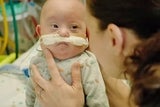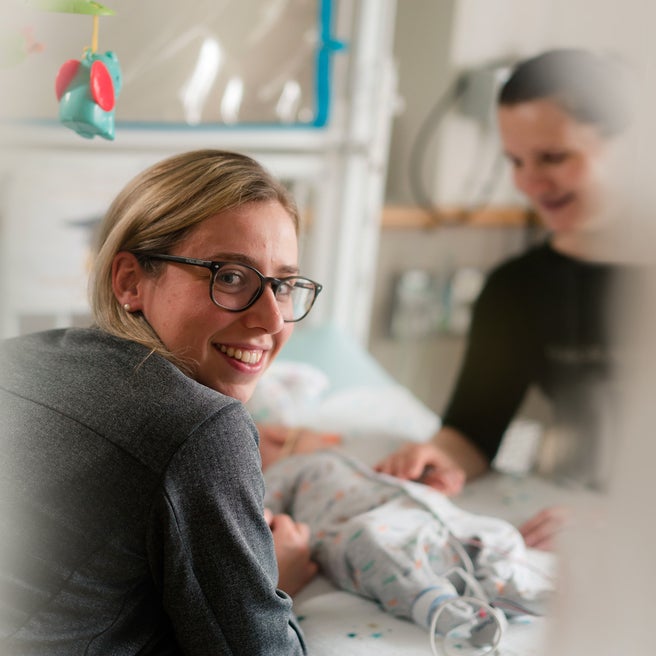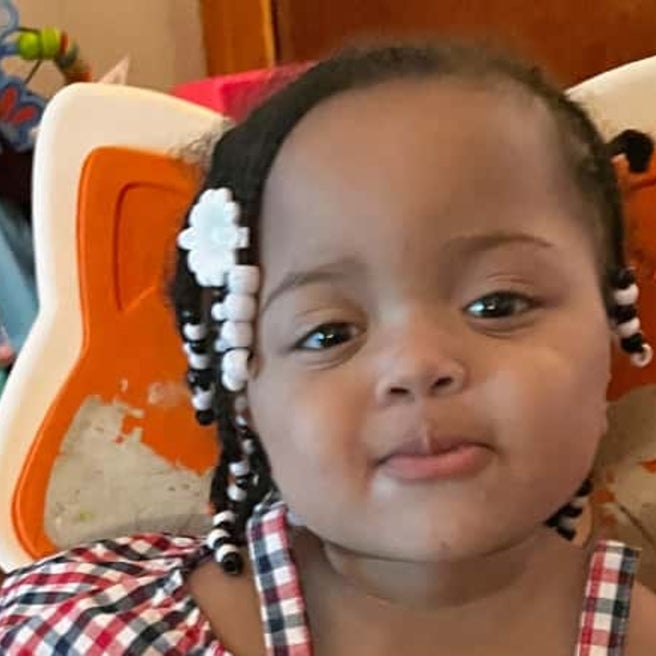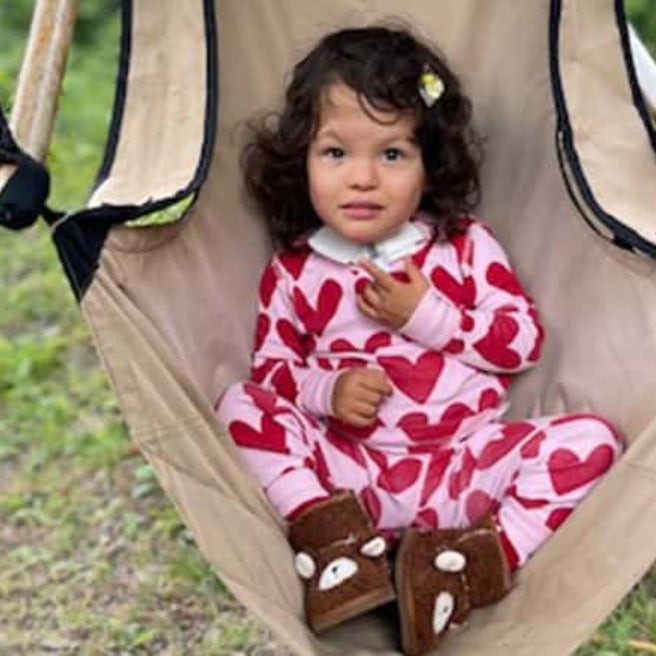What is bronchopulmonary dysplasia (BPD) or chronic lung disease of prematurity?
Bronchopulmonary dysplasia (BPD) in infants refers to long-term breathing and lung problems in premature babies. It is also known as chronic lung disease (CLD).
Bronchopulmonary dysplasia is a serious complication of prematurity resulting from poor lung growth and lung injury. It can occur when babies are born prematurely and need respiratory support to help them breathe.
The rate of bronchopulmonary dysplasia of infancy has been increasing worldwide as more babies have survived being born earlier.
What causes bronchopulmonary dysplasia (BPD)?
The causes of bronchopulmonary dysplasia are not entirely clear. In general, lung prematurity with poor lung growth after birth and injuries or damage to a baby’s lungs are considered to be the main reason for premature infants developing BPD.
Multiple factors can contribute to the development of chronic lung disease in these premature infants:
- Prematurity: When babies are born prematurely, the lungs, especially the air sacs (alveoli), are not fully developed.
- Genetic predisposition: Certain babies may carry variants in certain genes that make these babies more prone to chronic lung disease.
- Exposure to infection and toxic environment (such as maternal smoking) before birth: Lungs of these babies may not be fully grown and can also become inflamed.
- Poor growth after birth: Sick premature infants often have difficulties getting good nutrition. When their bodies don’t grow, the lungs will also not grow well, and will have a harder time repairing previous injuries.
- Lung injury after birth: The lungs of premature babies are fragile and are easily damaged. When the lungs are injured, the tissues inside the lungs become inflamed and can break down, causing scarring. This scarring can result in difficulty breathing and increased oxygen needs. Lung injuries may come from:
- Oxygen use: High concentrations of oxygen needed to help some babies breathe can damage the cells of the lungs.
- Mechanical ventilation: The pressure of air from breathing machines, suctioning of the airways, and use of an endotracheal tube (ET tube), a tube placed in the trachea and connected to a breathing machine, can all cause damage to a newborn baby’s lungs.
- Infection after birth: Infections can either directly damage the lungs or cause the lung to become inflamed.
Who is affected by bronchopulmonary dysplasia (BPD)?
Bronchopulmonary dysplasia can develop in premature babies who have been on a breathing machine (mechanical ventilation) or required other high-level respiratory support.
Risk factors for developing BPD include:
- Birth at less than 30 weeks of gestation
- Birthweight less than 1,000 (less than 2 pounds) to 1,500 grams (3 pounds 5 ounces)
- Infants with growth restriction before or after birth
- Male babies
- Infant respiratory distress — lung disease of prematurity due to lack of surfactant
- Premature infants needing breathing support from a ventilator or oxygen therapy after birth
- Some conditions frequently seen in premature infants may also put babies at risk for chronic lung disease:
- Patent ductus arteriosus (PDA): A connection between the blood vessels of the heart and lungs that does not close as it should after birth
- Development of an infection after birth
- Gastroesophageal reflux
What are the symptoms of bronchopulmonary dysplasia (BPD)?
The following are the most common symptoms of BPD. However, each baby may experience different signs of the condition.
Symptoms of BPD or chronic lung disease of prematurity may include:
- Respiratory distress (rapid breathing, flaring of the nostrils, grunting, chest retractions)
- Continued need for positive pressure respiratory support or oxygen after a premature baby reaches 36 weeks of gestation
The symptoms of bronchopulmonary dysplasia (BPD) in infants may resemble other conditions or medical problems. Always consult your baby's doctor for a diagnosis.
How is bronchopulmonary dysplasia (BPD) diagnosed?
Because BPD is a chronic disease and appears gradually, doctors must look at several factors. Bronchopulmonary dysplasia is often diagnosed when a premature baby with breathing and lung problems continues to need additional oxygen after reaching 28 days of age.
In addition to bronchopulmonary dysplasia, infants with severe BPD may also have airway problems, issues with lung vessels and heart function, as well as other organ system problems. These issues will affect the progression of the lung disease and brain development. At Children’s Hospital of Philadelphia (CHOP), your child’s evaluation will begin with a physical exam and complete medical history. Diagnostic tests will be ordered based on your child’s condition. Your child’s evaluation may include:
- Chest X-rays to look for changes in the appearance of the lungs
- Blood tests to determine if enough oxygen is in the blood
- Echocardiogram to evaluate the structure and function of the heart
- Assessment of pulmonary mechanics
- Developmental testing by PT/OT and developmental psychologists
- Assessment of nutritional status
- Bone health evaluation
- Evaluation for gastroesophageal reflux (GER) and aspiration
- Speech evaluation for oral, motor and feeding skills
- Ultra-low-dose CT angiogram (CTA)
- Rigid bronchoscopy to evaluate airway anomalies
- Flex bronchoscopy with or without bronchoalveolar lavage
- Ventilation/perfusion scan
- Cardiac catheterization
- MR lymphangiography
- Lung biopsy
- Genetic evaluation
Treatment of bronchopulmonary dysplasia in infants
Specific treatment for your baby’s bronchopulmonary dysplasia will be determined by your child's doctor based on:
- Your baby's gestational age, overall health, and medical history
- Extent of the disease after a thorough evaluation
- Your baby's tolerance for specific medications, procedures, or therapies
- Expectations for the course of the disease
To achieve the best outcome for your child, it is important that their care be provided by a multidisciplinary team with experience and specialized training. At Children’s Hospital of Philadelphia (CHOP), children with chronic lung disease of infancy are cared for by a dedicated Newborn and Infant Chronic Lung Disease Program.
Housed within CHOP’s Newborn/Infant Intensive Care Unit, the program offers infants with chronic lung disease — and their families — seamless care from initial evaluation, to treatment and long-term follow-up care. Watch the following video to meet our team and hear from one of our patient families.
Our goal is to provide lifesaving therapy to all children with BPD, without compromising their long-term quality of life.
Our multidisciplinary team includes specialists from all the areas a child with CLD might need — Neonatology, Pulmonary Medicine, Cardiology, ENT, General Surgery, Nutrition, Respiratory/Physical/Occupational/Speech-language Therapy, and more.
Treatment of bronchopulmonary dysplasia may include:
- Respiratory support
- Extra oxygen (to make up for the decreased breathing ability of the damaged lungs), and a pulse oximeter to measure how much oxygen is in the blood
- Breathing support through a ventilator or other devices
- Medications such as:
- Bronchodilators (to help open the airways)
- Steroids (to help reduce inflammation)
- Diuretics (to help reduce excess fluid in the lungs)
- Vasodilators (to help decrease blood pressure in the lungs)
- Antibiotics (to fight an infection)
- Management and treatment of related complications, such as reflux or pulmonary hypertension
- Radiant warmers or incubators to keep the infant warm and decrease the risks of developing an infection
- Nutrition (to help the baby and the lungs grow)
- Immunization against lung infection by respiratory syncytial virus (RSV), influenza, and bacteria that can cause lung infections
Learn more about our full range of therapies offered to children with CLD.

Your Newborn's Chronic Lung Disease Program Experience
Learn more about what to expect when your baby is evaluated by the Newborn and Infant Chronic Lung Disease Program.
Long-term follow-up care
CLD can be a long-term condition. It is important to receive care at a place where your child has access to the many experts and subspecialties they may need.
Some babies with bronchopulmonary dysplasia require mechanical ventilators for several months. Some babies will continue to require oxygen when they go home from the hospital, but most can be weaned from oxygen by the end of their first year. Babies with CLD may be at increased risk for respiratory infection and may have to be rehospitalized.
At CHOP, your baby’s care will be coordinated with other specialized teams, including our Neonatal Follow-up Program, the Division of Pulmonary and Sleep Medicine, the Pulmonary Hypertension Program, and our Technology Dependence Center if needed.
When treatment in our intensive care setting is no longer needed, our team will help you and your baby make a seamless transition to home, a home hospital, or a chronic care facility.
Resources to help
Infant Chronic Lung Disease Resources
Newborn and Infant Chronic Lung Disease Program Resources
The journey for our families can be long and complex. We have resources to help you find answers to your questions, feel supported and cope through this experience.
Reviewed by Huayan Zhang, MD


